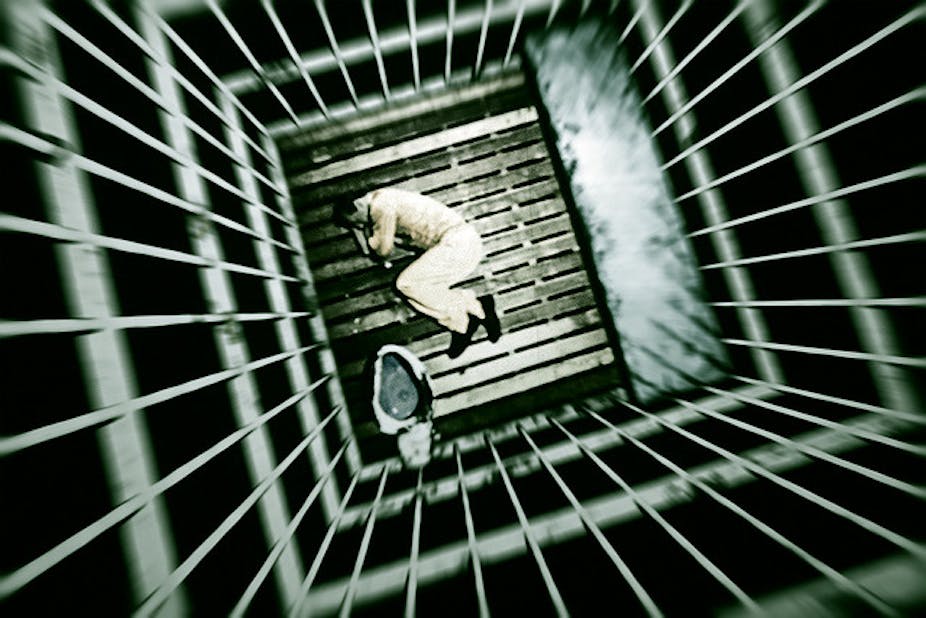There are hopeful signs from a number of sources that the “get tough on crime” approach is working, with politicians promising the era of more prisons and longer sentences has had its day.
Movements such as Justice Reinvestment – redirecting money earmarked for prisons to address disadvantage in communities prisoners come from – is one manifestation of a more rational and humane approach to crime.
For Aboriginal communities, where imprisonment has reached epidemic proportions, this shift is long overdue.
And the research community has a responsibility to make the costs more transparent, not just to the taxpayer but to Aboriginal communities, prisoners and prisoner families as well.
Deaths remove fathers completely
We were reminded of one aspect of these costs when marking 20 years since the Royal Commission into Aboriginal Deaths in Custody.
In the time since that report highlighted the unacceptable, and often brutal, deaths of Aboriginal men in custody, 269 more Indigenous men have died in similar circumstances.
Most of the Aboriginal men who die in custody are fathers, as are most of those who remain in custody. And in Indigenous communities, both fathers and men who are not fathers have important roles to play children’s growth and well-being.
So, when Aboriginal men are removed from the community, the social and family relationships that might steer young people away from crime break down and the nurturing these men might provide is lost.
Measuring the effect of father removal
Quantifying the impact of missing fathers is difficult: poor housing, overcrowding and low income are well recognised factors for children’s behavioural problems. And the possible benefit to families where violent fathers are removed also needs to be considered.
Researchers from the United States have recently been able to take advantage of two longitudinal surveys involving repeated interviews with primary caregivers of a total of 11,000 young children in 20 cities.
The study, which was published in the journal Criminology & Public Policy this year, was able to account for well-recognised neighbourhood and family factors that lead to mental health and behavioural problems in children, and calculate the additional impact of fathers’ incarceration.
The results are clear and disturbing.
Having a father in prison significantly increases the rate of children’s mental health and behavioural problems across both externalising (aggression) and internalizing (depression) dimensions for boys and girls.
The most conservative size of the effect averaged across all the dimensions was a modest 4% to 6%. But in areas such as boys’ aggression, having a father in prison increased adverse impact by between 19% and 33%.
Significantly, these effects didn’t just apply to those fathers jailed for violent crimes.
The study also showed that the “get tough on crime” policies popular in the United States since the 1970s have had a bigger impact on black men – by 1990, a black child had a one in four chance of having a parent in prison.
… and for Australia?
If this effect were to hold for Australia, we would echo the conclusion of US researchers that the increasing use of incarceration disproportionately impacts on Aboriginal men.
And it increases the gap in the rates of problem behaviour (and therefore school success) among their children.
We do know that the rates of Aboriginal male imprisonment have risen by 35% from 2000 to 2010, to almost 7,000.
And 26% of Aboriginal children aged 4 to 11 years are at high risk of emotional or behavioural difficulties, compared with 17% of non-Aboriginal children.
But we have no longitudinal data sets that would allow us to confirm if the gap was increasing due to increased imprisonment.
And regardless of the reason for the gap, we need to address the impact that removing male role models in having on Indigenous communities.
Some important initiatives
As well as reducing the number of fathers and father figures going into jail we need to reduce the number not coming back. This means introducing programs on fathering, rather than focussing just on drug abuse and violence.
The Brothers Inside program, for instance, focuses men on the relationships they want with their children.
And a national Strong Fathers Strong Families program will target Aboriginal and Torres Strait Islander male parenting roles with newborns and young children.
But keeping fathers and strong father figures in communities where they can nurture the next generation will require more than programs.
It will require recognition of the value of fathering even among those “hard cases” who end up on the wrong side of the law.

